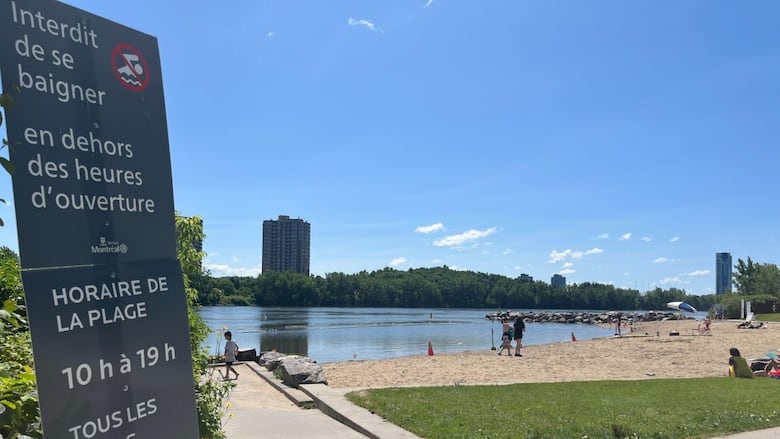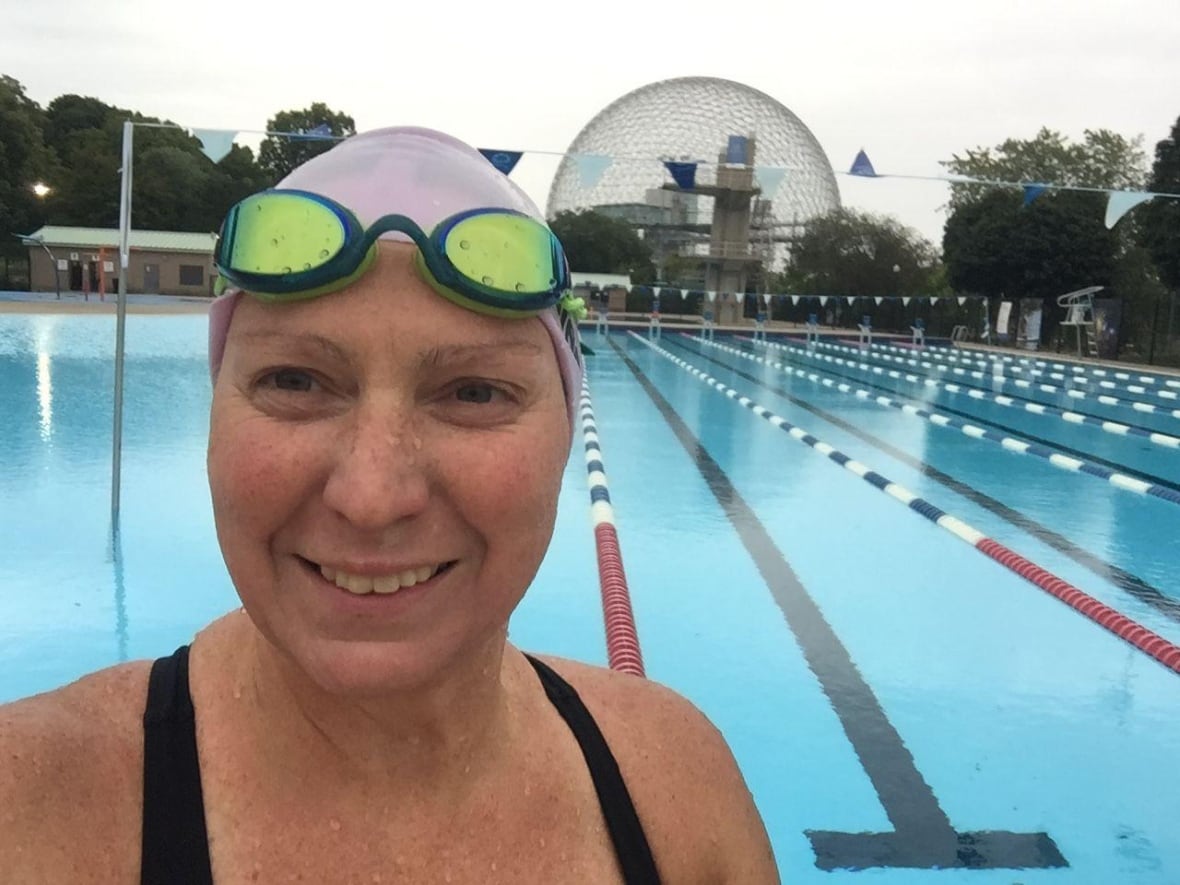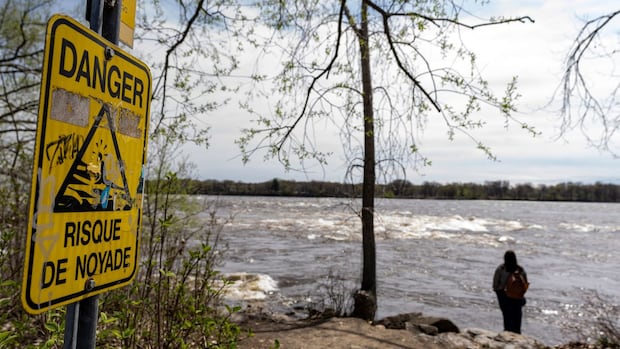3 people have drowned near Verdun Beach in a month. Here's why the river can be dangerous
'You need to understand what the water is like,’ says executive director of river institute

On a hot summer day, the St. Lawrence River can look calm, even inviting. Families set up picnics along the shore, people on paddleboards glide by, and some brave swimmers wade in to cool off.
Despite the city being surrounded by water, only a handful of places are considered safe for swimming.
Beneath a calm surface, Anastasia Polito, a Montreal-based triathlon coach, says there's a very real danger.
"It's moving at a quiet high speed," she said.
Even strong swimmers can be caught off guard by sudden currents or temperature changes, she says. Much of the river remains unpredictable — and its consequences can be fatal.
Last Wednesday, Montreal police recovered the body of a 32-year-old man who was last seen in the St. Lawrence River near Verdun Beach. In June, two other people died at the popular swimming spot. The recent drownings have prompted the borough to set up more signs to warn people about the risks of swimming outside the beach barriers and opening hours.
Stretching 1,200 kilometres, the St. Lawrence River is one of North America's great waterways. It links the Great Lakes to the Atlantic, carrying massive cargo ships through its deep channels.
Those same channels create swirling currents that can change in seconds.
Along with sudden drops in temperature and few monitored swimming areas, experts say the size and force of the river also make rescues complicated and dangerous for emergency responders.
'Minutes to intervene,' says president of firefighters association
Chris Ross, president of the Montreal Firefighters Association, says even with access to a phone and a call to 911, help might not arrive in time.
"We're not trained or equipped to perform rescues from sides of the river," says Ross.
"Our water rescues are boat-based. That means we need time to get to the boat."
By the time crews get in the water and reach the person in distress, he says they might run out of time.
"If you want to save somebody's life that's in the process of drowning, you have literally minutes to intervene and get them out of the water," he said.

Experts stress that the best way to stay safe is to know your limits, avoid swimming alone, wear a life jacket, check local water quality advisories and choose supervised swimming areas.
In Montreal, there are a few designated swimming areas including Verdun Beach, Parc Jean-Doré Beach, and Cap-Saint-Jacques. While these sites are monitored by lifeguards, and their water quality regularly tested, the rest of the river is largely unmonitored.
Warning signs are few and far between, and conditions can change in minutes. What might look like a quiet, welcoming stretch of water may hide invisible hazards, experts say.
"Each part of the river has its own characteristics," says Jeff Ridal, executive director of the St. Lawrence River Institute.
"You need to understand what the water is like in the specific area where you're swimming."


